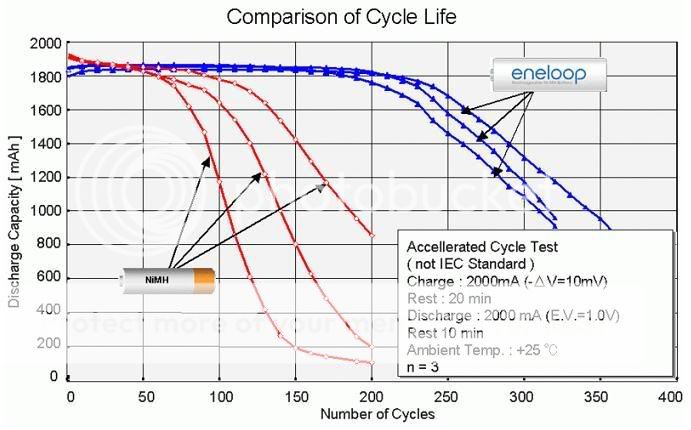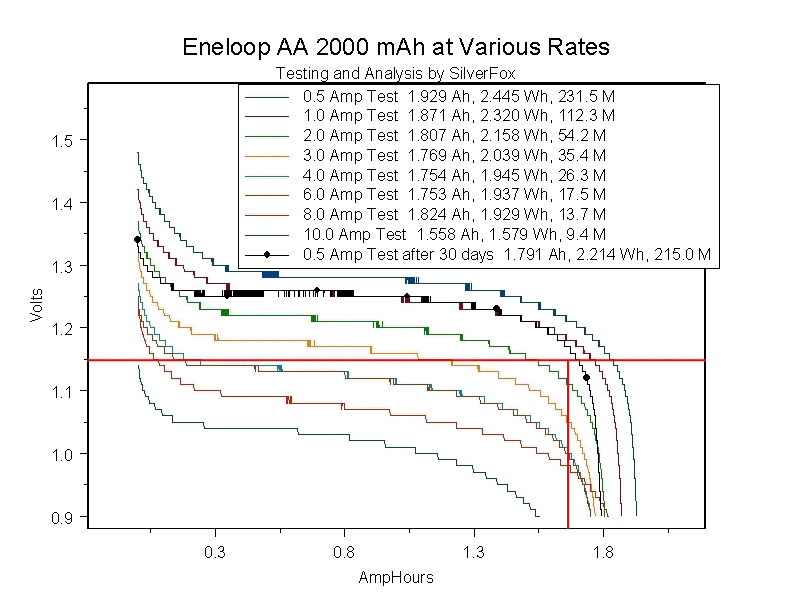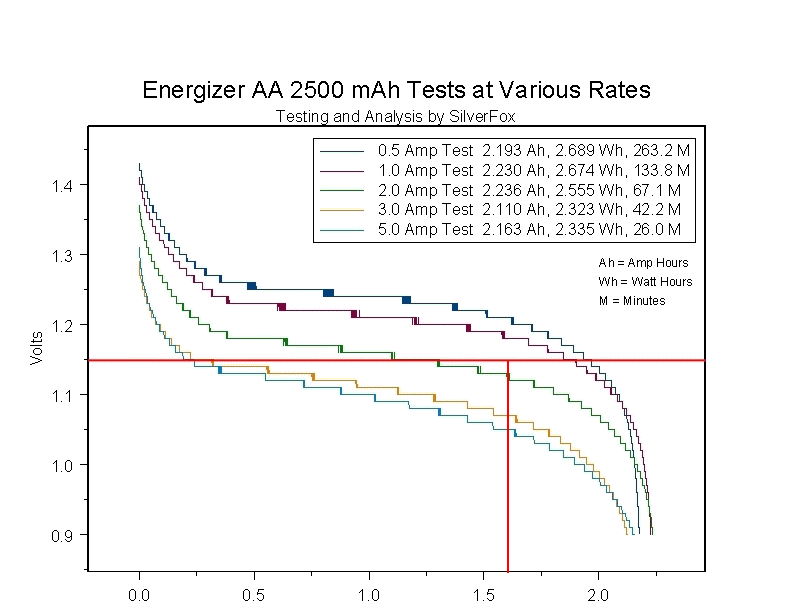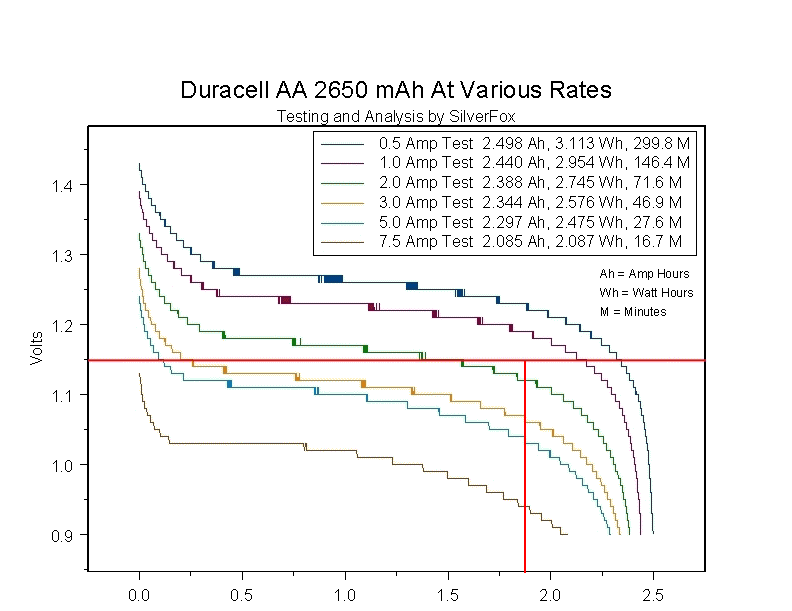Bones
Enlightened
The Sanyo Europe website has recently evolved into a trove of information on the Eneloop including plenty of graphs and diagrams.
Here are hyperlinks to a some of the most relevant pages:
Cover - an Overview
Capacity - Nominal, Stored and Under Discharge
Self-Discharge - Capacity, Voltage and Higher Temperatures
Discharge Currents - Performance at Higher Currents
Low Temperature - Discharge at Low Temperatures
Voltage - Operating Voltage and DSC Settings
Cycle Life - Cycle Characteristics and Comparison
Technology - Construction and Self-Discharge Reduction
Q & A - Eneloop Questions and Answers
A very detailed .pdf document entitled 'Development of Low Self-Discharge Nickel Metal Hydride Battery' from the Sanyo Technical Marketing Department:
http://www.eneloop.info ... editors.article.pdf
But one of the available graphs; this one compares the cycle life of 3 regular NiMH cells and 3 Eneloops which were basically flogged to death, albeit not to anywhere near the degree exercised by SilverFox:

I can't help but contrast the exceptional amount of information that Sanyo has disclosed about the Eneloop with the dearth of information disclosed by virtually every other brand of low self-discharge cell.
This, combined with the thus far exemplary performance, quality and consistency of the Eneloop, does seem to reflect a company that's actually deserving our business.
Here's hoping the merger with Panasonic doesn't screw this up.
Here are hyperlinks to a some of the most relevant pages:
Cover - an Overview
Capacity - Nominal, Stored and Under Discharge
Self-Discharge - Capacity, Voltage and Higher Temperatures
Discharge Currents - Performance at Higher Currents
Low Temperature - Discharge at Low Temperatures
Voltage - Operating Voltage and DSC Settings
Cycle Life - Cycle Characteristics and Comparison
Technology - Construction and Self-Discharge Reduction
Q & A - Eneloop Questions and Answers
A very detailed .pdf document entitled 'Development of Low Self-Discharge Nickel Metal Hydride Battery' from the Sanyo Technical Marketing Department:
http://www.eneloop.info ... editors.article.pdf
But one of the available graphs; this one compares the cycle life of 3 regular NiMH cells and 3 Eneloops which were basically flogged to death, albeit not to anywhere near the degree exercised by SilverFox:

I can't help but contrast the exceptional amount of information that Sanyo has disclosed about the Eneloop with the dearth of information disclosed by virtually every other brand of low self-discharge cell.
This, combined with the thus far exemplary performance, quality and consistency of the Eneloop, does seem to reflect a company that's actually deserving our business.
Here's hoping the merger with Panasonic doesn't screw this up.





